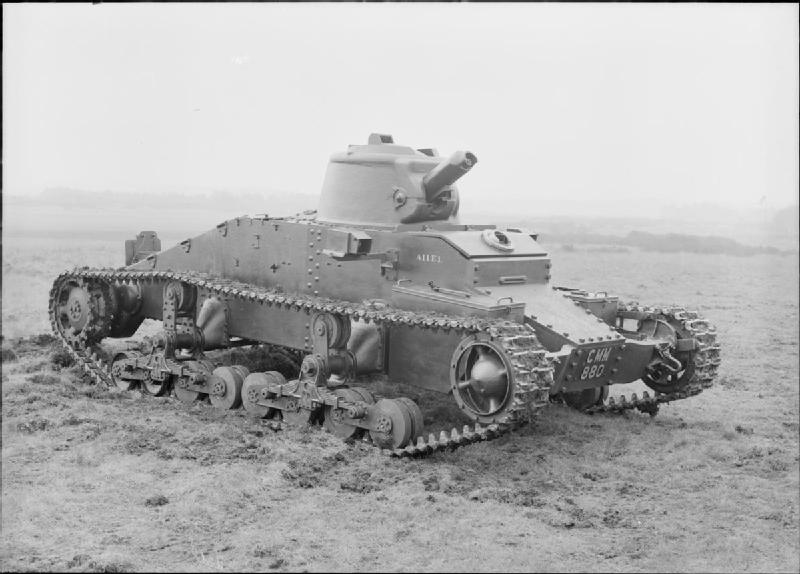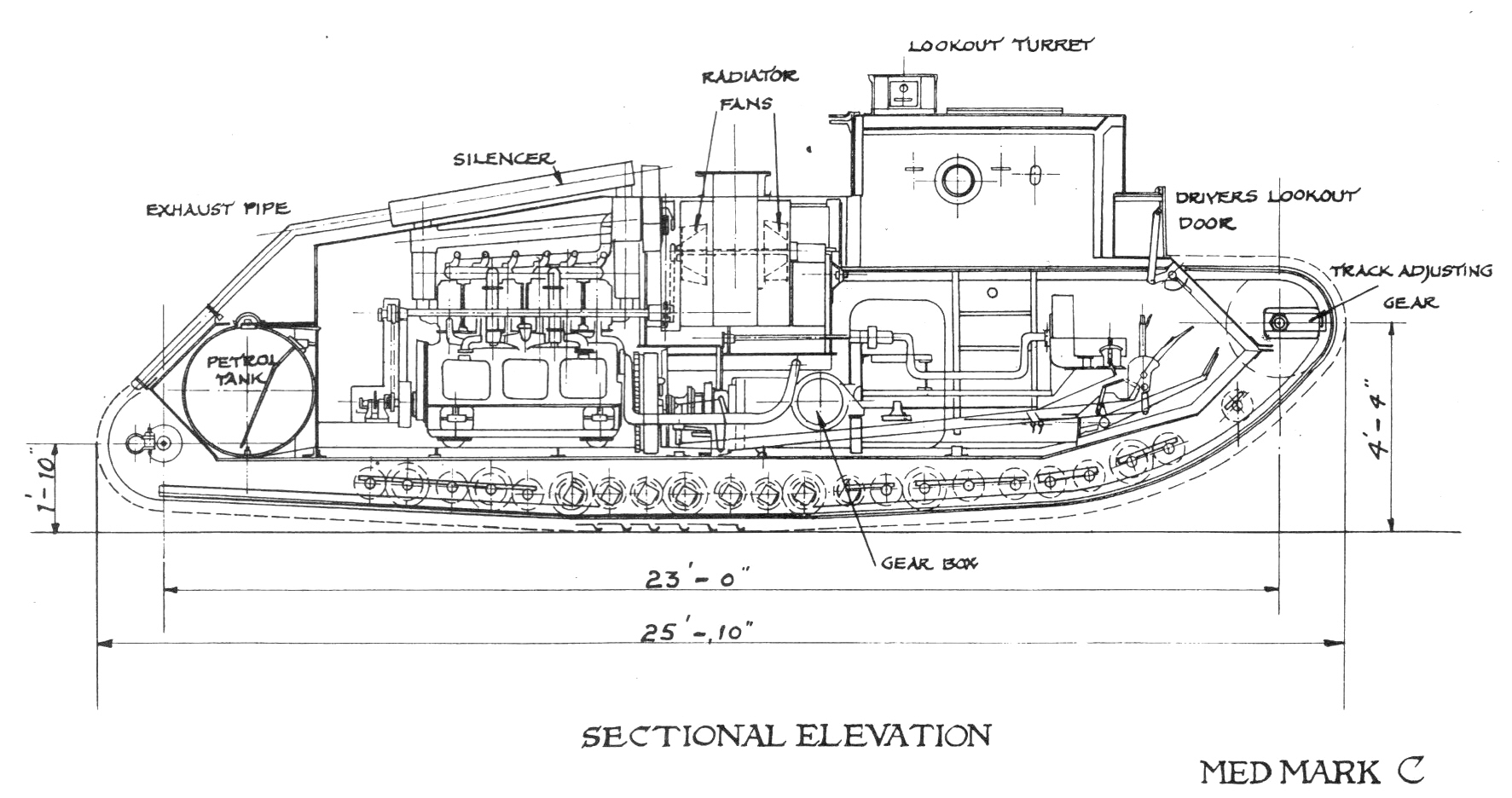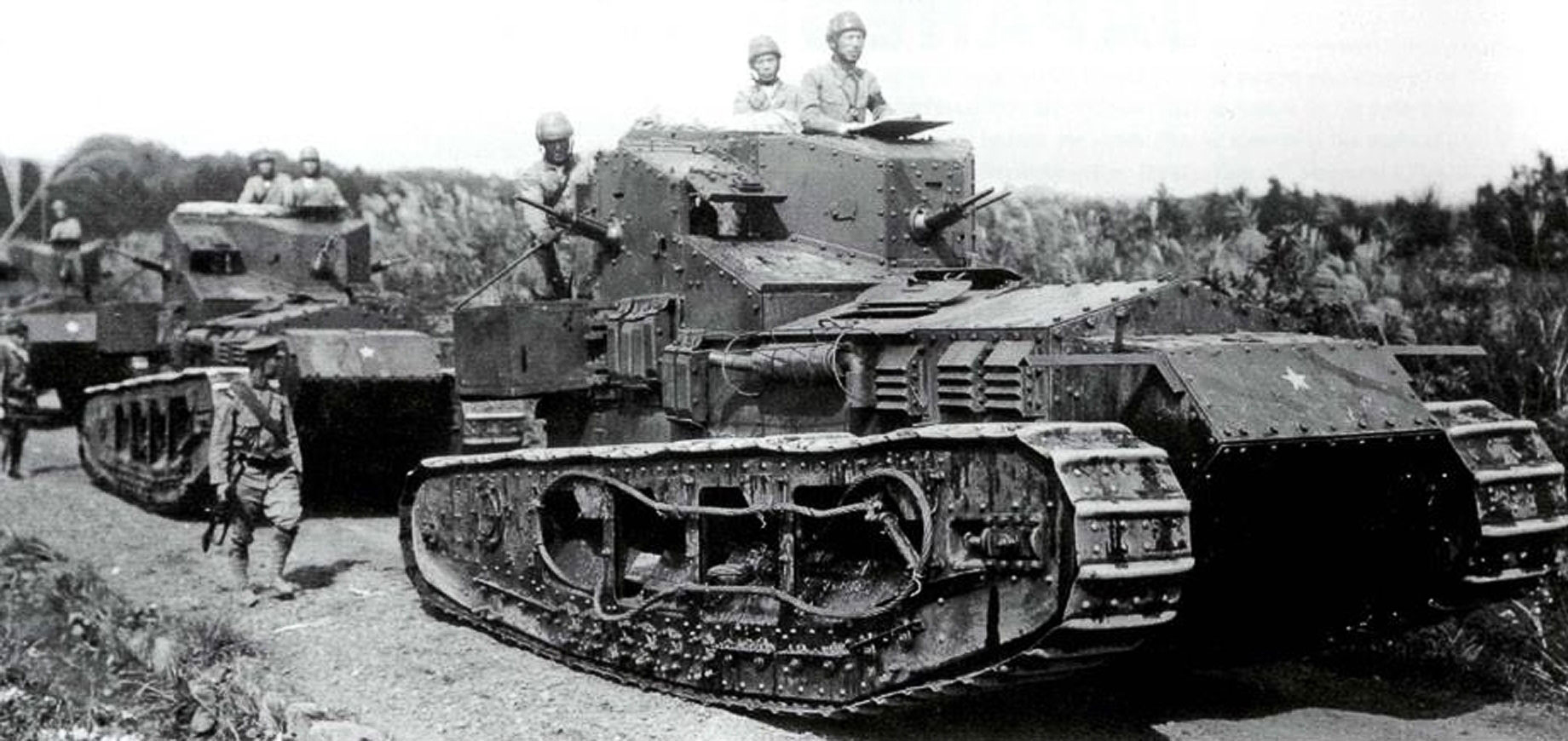|
Matilda II
The Infantry Tank Mark II, better known as the Matilda, is a British infantry tank of the Second World War.Jentz, p. 11. The design began as the A12 specification in 1936, as a gun-armed counterpart to the first British infantry tank, the machine gun armed, two-man A11 Infantry Tank Mark I. The Mark I was also known as Matilda, and the larger A12 was initially known as the Matilda II or Matilda senior. The Mark I was abandoned in 1940, and from then on the A12 was almost always known simply as "the Matilda". With its heavy armour, the Matilda II was an excellent infantry support tank but with somewhat limited speed and armament. It was the only British tank to serve from the start of the war to its end, although it is particularly associated with the North Africa Campaign. Only two were available for service by the outbreak of World War II in 1939. It was replaced in front-line service by the cheaper and lighter Infantry Tank Mk III Valentine from late 1941. Development his ... [...More Info...] [...Related Items...] OR: [Wikipedia] [Google] [Baidu] |
Infantry Tank
The infantry tank was a tank concept developed by the United Kingdom and France in the years leading up to World War II. Infantry tanks were designed to support infantrymen in an attack. To achieve this, the vehicles were generally heavily armoured to allow them to operate in close concert with infantry even under heavy fire. The extra armour came at the expense of speed, which was not an issue when supporting relatively slow-moving foot soldiers. Once an attack supported by infantry tanks had broken through heavily defended areas in the enemy lines, faster tanks such as cruiser or light tanks were expected to use their higher speed and longer range to operate far behind the front and cut lines of supply and communications. The infantry tank was superseded by the "Universal Tank" concept which could adequately perform the roles of both infantry and cruiser tank, as represented by the Centurion which replaced both the Churchill and any medium or cruiser tanks then in service. ... [...More Info...] [...Related Items...] OR: [Wikipedia] [Google] [Baidu] |
Tanks In The British Army
This article on military tanks deals with the history and development of tanks of the British Army from their first use in the World War I, First World War, the interwar period, during the World War II, Second World War, the Cold War and modern era. Overview Tanks first appeared on the battlefield as a solution to trench warfare. They were large, heavy, slow moving vehicles capable of driving right over the top of enemy trenches; thereby eliminating the need to send soldiers "over the top" only to be blasted to pieces by enemies. The British Army was the first to use them, who built them in secret to begin with. To keep the enemy from finding out about this new solution, the public were informed that the vehicles were large water carriers, or tanks, and the name stuck. The First World War established the validity of the tank concept. After the war, many nations needed to have tanks, but only a few had the industrial resources to design and build them. During and after the w ... [...More Info...] [...Related Items...] OR: [Wikipedia] [Google] [Baidu] |
Percy Hobart
Major-General Sir Percy Cleghorn Stanley Hobart, (14 June 1885 – 19 February 1957), also known as "Hobo", was a British military engineer noted for his command of the 79th Armoured Division during the Second World War. He was responsible for many of the specialised armoured vehicles ("Hobart's Funnies") that took part in the invasion of Normandy and later actions. Early life Hobart was born in Naini Tal, British India, to Robert T. Hobart (of the Indian Civil Service), and Janetta (née Stanley). His mother was born in County Tyrone (Northern Ireland) and lived at Roughan Park, near Newmills, between Cookstown and Dungannon. She married Robert Hobart in Tullaniskin Parish Church, Dungannon, on 7 October 1880. In his youth, Hobart studied history, painting, literature and church architecture. He was educated at Temple Grove School and Clifton College, and in 1904 he graduated from the Royal Military Academy, Woolwich and was commissioned into the Royal Engineers. He was firs ... [...More Info...] [...Related Items...] OR: [Wikipedia] [Google] [Baidu] |
Interbellum
In the history of the 20th century, the interwar period, also known as the interbellum (), lasted from 11 November 1918 to 1 September 1939 (20 years, 9 months, 21 days) – from the end of World War I (WWI) to the beginning of World War II (WWII). It was relatively short, yet featured many social, political, military, and economic changes throughout the world. Petroleum-based energy production and associated mechanisation led to the prosperous Roaring Twenties, a time of social and economic mobility for the middle class. Automobiles, electric lighting, radio, and more became common among populations in the first world. The era's indulgences were followed by the Great Depression, an unprecedented worldwide economic downturn that severely damaged many of the world's largest economies. Politically, the era coincided with the rise of communism, starting in Russia with the October Revolution and Russian Civil War, at the end of WWI, and ended with the rise of fascism, particularly ... [...More Info...] [...Related Items...] OR: [Wikipedia] [Google] [Baidu] |
Medium Mark C
The Medium Mark C Hornet was a British medium tank developed during the First World War, but produced too late to see any fighting. Development In 1917 Sir William Tritton had developed the Medium Mark A Whippet without involving his former co-worker Walter Gordon Wilson. In response Major Wilson began to design an improved type on his own, the Medium Mark B, in July 1917. As soon as he became aware of Wilson's intentions, Tritton ordered his chief designer, William Rigby, to design a rival type: the Medium Mark C. The drawings were approved by the British Army on 19 April 1918. The prototype was finished in August, a few weeks before the Medium B prototype also in construction at Tritton's own factory. At first 200 tanks were ordered; later this was increased to 600, all to be produced by William Foster & Co Ltd at Lincoln with Armlet & Wortley as subcontractor. Only 50 were built. The colloquial name of the tank was to be "Hornet", but it seems nobody ever used it. Descrip ... [...More Info...] [...Related Items...] OR: [Wikipedia] [Google] [Baidu] |
Medium Mark B
The Medium Mark B was a British medium tank of the First World War developed as a successor to the Whippet, but ultimately unsatisfactory and production was cancelled at the end of the war. History The engineer Lieutenant Walter Wilson and the industrialist Sir William Tritton had cooperated in 1915 to develop the Mark I, the world's first operational tank. However, when Tritton decided to build the Medium Mark A "Whippet", Wilson was left out. The Medium A was designed by Tritton's chief engineer, William Rigby. The Whippet was a successful design and proved effective but suffered from a lack of power, complex steering and unsprung suspension. Wilson, now a Major, decided he could by himself develop a better tank as replacement: the 'Medium Tank Mark B'. He probably started drawing in July 1917. Major Philip Johnson of Central Tank Workshops was impressed when he was shown a wooden mock-up during a visit to Britain late 1917. The prototype was built by Tritton's firm, the M ... [...More Info...] [...Related Items...] OR: [Wikipedia] [Google] [Baidu] |
Whippet (tank)
The Medium Mark A Whippet was a medium tank employed by the British in World War I. Developed for fast mobile assaults, it was intended to complement the slower British heavy tanks by using its relative mobility and speed in exploiting any break in the enemy lines. Although the track design appears more "modern" than the British Tanks Mark I to V, it was directly derived from ''Little Willie'', the first tank prototype (itself directly taken from the track design of the Holt tractor), and was unsprung. The crew compartment was a fixed, polygonal turret at the rear of the vehicle, and two engines of the type used in contemporary double-decker buses were in a forward compartment, driving one track each. Development On 3 October 1916 William Tritton, about to be knighted for developing the Mark I, proposed to the Tank Supply Committee that a faster and cheaper tank, equipped with two engines like the Flying Elephant, should be built to exploit gaps that the heavier but slow ta ... [...More Info...] [...Related Items...] OR: [Wikipedia] [Google] [Baidu] |
Mark I (tank)
British heavy tanks were a series of related armoured fighting vehicles developed by the UK during the First World War. The Mark I was the world's first tank, a tracked, armed, and armoured vehicle, to enter combat. The name "tank" was initially a code name to maintain secrecy and disguise its true purpose. The tank was developed in 1915 to break the stalemate of trench warfare. It could survive the machine gun and small-arms fire in " no man's land", travel over difficult terrain, crush barbed wire, and cross trenches to assault fortified enemy positions with powerful armament. Tanks also carried supplies and troops. British heavy tanks are distinguished by a rhomboidal shape with a high climbing face of the track, designed to cross the wide and deep trenches prevalent on the battlefields of the Western Front. Due to the height necessary for this shape, an armed turret would have made the vehicle too tall and unstable. Instead, the main armament was arranged in sponsons at ... [...More Info...] [...Related Items...] OR: [Wikipedia] [Google] [Baidu] |
World War I
World War I or the First World War (28 July 1914 – 11 November 1918), also known as the Great War, was a World war, global conflict between two coalitions: the Allies of World War I, Allies (or Entente) and the Central Powers. Fighting took place mainly in European theatre of World War I, Europe and the Middle Eastern theatre of World War I, Middle East, as well as in parts of African theatre of World War I, Africa and the Asian and Pacific theatre of World War I, Asia-Pacific, and in Europe was characterised by trench warfare; the widespread use of Artillery of World War I, artillery, machine guns, and Chemical weapons in World War I, chemical weapons (gas); and the introductions of Tanks in World War I, tanks and Aviation in World War I, aircraft. World War I was one of the List of wars by death toll, deadliest conflicts in history, resulting in an estimated World War I casualties, 10 million military dead and more than 20 million wounded, plus some 10 million civilian de ... [...More Info...] [...Related Items...] OR: [Wikipedia] [Google] [Baidu] |
Valentine Tank
The Tank, Infantry, Mk III, Valentine was an infantry tank produced in the United Kingdom during World War II. More than 8,000 Valentines were produced in eleven marks, plus specialised variants, accounting for about a quarter of wartime British tank production. The variants included riveted and welded construction, petrol and diesel engines and increases in armament. It was supplied in large numbers to the USSR and built under licence in Canada. It was used by the British in the North African campaign. Developed by Vickers, it proved to be strong and reliable. Name There are several proposed explanations for the name ''Valentine''. According to the most popular one, the design was presented to the War Office on St Valentine's Day, 14 February 1940, although some sources say that the design was submitted on Valentine's Day 1938 or 10 February 1938. White notes that "incidentally" Valentine was the middle name of Sir John Carden, 6th Baronet, Sir John Carden, the man responsible ... [...More Info...] [...Related Items...] OR: [Wikipedia] [Google] [Baidu] |
YouTube
YouTube is an American social media and online video sharing platform owned by Google. YouTube was founded on February 14, 2005, by Steve Chen, Chad Hurley, and Jawed Karim who were three former employees of PayPal. Headquartered in San Bruno, California, it is the second-most-visited website in the world, after Google Search. In January 2024, YouTube had more than 2.7billion monthly active users, who collectively watched more than one billion hours of videos every day. , videos were being uploaded to the platform at a rate of more than 500 hours of content per minute, and , there were approximately 14.8billion videos in total. On November 13, 2006, YouTube was purchased by Google for $1.65 billion (equivalent to $ billion in ). Google expanded YouTube's business model of generating revenue from advertisements alone, to offering paid content such as movies and exclusive content produced by and for YouTube. It also offers YouTube Premium, a paid subs ... [...More Info...] [...Related Items...] OR: [Wikipedia] [Google] [Baidu] |
North Africa Campaign
The North African campaign of World War II took place in North Africa from 10 June 1940 to 13 May 1943, fought between the Allies and the Axis Powers. It included campaigns in the Libyan and Egyptian deserts (Western Desert campaign, Desert War), in Morocco and Algeria (Operation Torch), and in Tunisia ( Tunisia campaign). The Allied war effort was dominated by the British Commonwealth and exiles from German-occupied Europe. The United States entered the war in December 1941 and began direct military assistance in North Africa on 11 May 1942. Fighting in North Africa started with the Italian declaration of war on 10 June 1940. On 14 June, the British 11th Hussars and part of the 1st Royal Tank Regiment, (1st RTR) crossed the border from Egypt into Libya and captured Fort Capuzzo. This was followed by an Italian counter-offensive into Egypt and the capture of Sidi Barrani in September. The British recaptured Sidi Barrani in December during Operation Compass. The Italian 1 ... [...More Info...] [...Related Items...] OR: [Wikipedia] [Google] [Baidu] |








